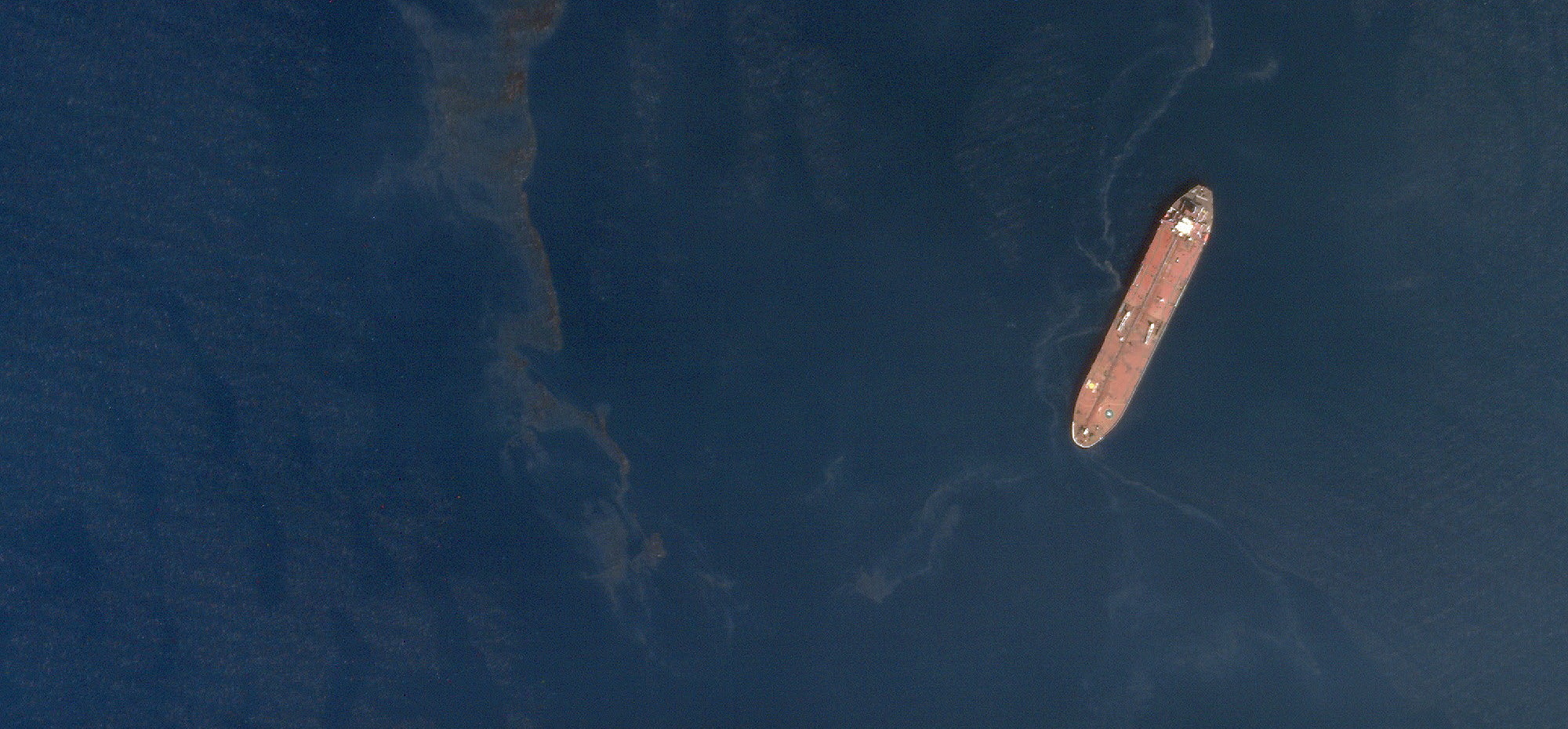A massive leak of over 10,000 tons of heavy fuel oil flowed from the Baniyas Thermal Power Plant on Syria’s coast into the Mediterranean Sea in the early morning of August 23, 2021. Within days, the black toxic substance quickly spread over hundreds of kilometers, washing across the beaches of Syria and dumping tar balls of oil on the shores of Turkey and Cyprus. This was a dangerous incident waiting to happen, as new remote sensing analysis over a period of three years conducted by PAX shows. Using commercial and public satellite imagery, the fourth report in a series of Environment and Conflict Alerts outlines how oil leaks from ruptured underwater pipelines, leaks from mooring oil tankers, and discharged polluted wastewater have turned Baniyas into an environmental hotspot.
Several incidents have resulted in wide scale pollution of the marine environment, including the June 2019 sabotage actions by unknow attackers to the underwater oil pipelines, resulting a spread over 30 kilometers, and a subsequent incident in July 2019 with a 20 km spill moving north-west. High resolution imagery provided by Planet and MAXAR further demonstrates how mooring oil tankers have dumped contaminated ballast water and other oil substances at the coast, and the nearby thermal powerplant remains another large source of wastewater discharge.
Conflict-linked pollution
A decade of armed conflict continues to pose growing threats to the environment as well as the people depending on it. Direct attacks on and degradation of energy infrastructure, lack of maintenance, and failing environmental governance capture the conflict-linked pollution in a microcosm. This has continued to amass into a wide array of problems, often leading to grave incidents that reached a critical point with the August 2021 spill. Syria’s coastal areas are an important source of livelihoods for fisheries and tourism while also hosting many unique yet fragile marine ecosystems. Lack of equipment and expertise in regime-held areas impedes capacities to rapidly respond to these threats, leading to transboundary pollution in the Mediterranean region.
Acute health risks
From oil pollution affecting water sources and agricultural lands in the east, to massive conflict-linked deforestation in the west, the whole of Syria’s environment is severely suffering due to the conflict. Not only can this pose acute health risks for civilians from exposure to toxic remnants of war, but also damage to natural resources impacts livelihoods and biodiversity, including effects which are additionally compounded by the impacts of climate-linked droughts and heatwaves. Rainfall shortages in the entire region pose serious risks to the future of agriculture and access to drinking water and electricity, which is often worsened by deliberate shutdowns of waterflows in rivers and pumping stations.
The full analysis of the related environmental risks in the Baniyas Bay can be found in the fourth installment in a series of Environment and Conflict Alerts. Other ECAs have analyzed conflict-linked wildfires in Iraq, crop fires in Syria, and toxic health risks from urban damage in Gaza.
Download Environment and Conflict Alert 4 | Baniyas: An Environmental Disaster in the Making




